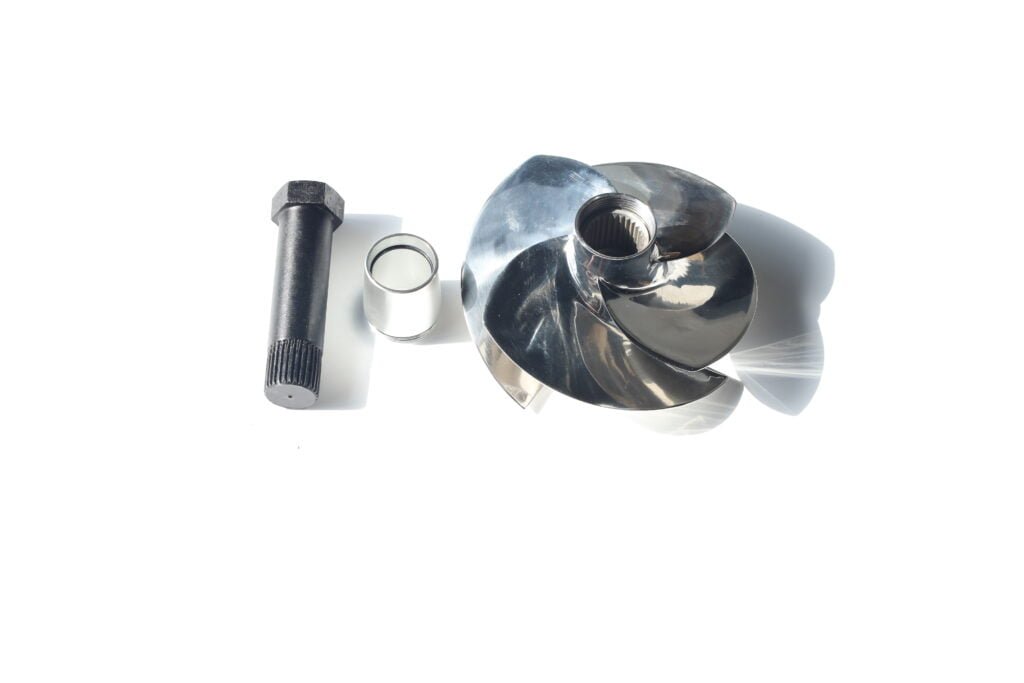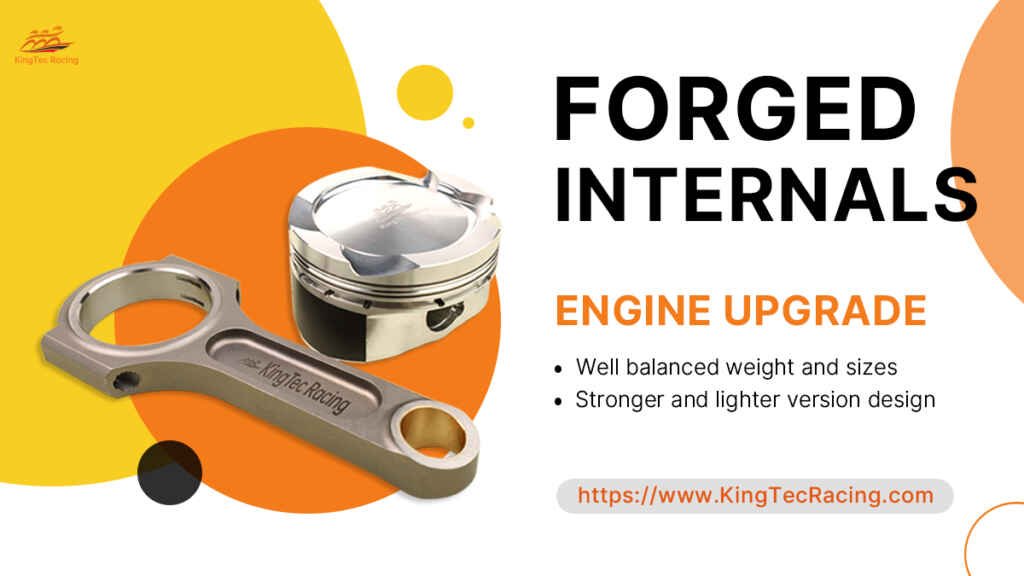How Does the Crankshaft Affect Acceleration?
The crankshaft, a vital engine component, plays a pivotal role in determining a vehicle’s performance. One of its crucial impacts lies in acceleration. In this article, we’ll explore the direct influence of a well-chosen crankshaft on your vehicle’s ability to accelerate swiftly and efficiently.
1. Enhanced Engine Response:
Upgrading your crankshaft can lead to a notable improvement in engine response. A sturdier crankshaft reduces rotational inertia, allowing the engine to react promptly to throttle inputs. This translates to quicker acceleration, a must-have for those seeking an agile ride.
2. Increased Power Transfer Efficiency:
A quality crankshaft ensures that power generated within the engine is efficiently transmitted to the drivetrain. This means more of the engine’s power is dedicated to propelling the vehicle forward, resulting in swifter acceleration rates.
3. Reduced Weight, Increased Agility:
Opting for a lightweight, high-performance crankshaft can lead to a reduction in overall engine weight. This means less mass to move, enabling the engine to respond more promptly to changes in throttle position. The result? Faster acceleration and improved agility on the road.
4. Precision Engineering for Peak Performance:
A well-crafted crankshaft, machined to exacting tolerances, minimizes internal friction. This reduction in frictional losses ensures that a higher percentage of the engine’s power contributes to acceleration, maximizing performance.
5. Compatibility with Performance Modifications:
For those looking to supercharge their engine with aftermarket enhancements like turbochargers or superchargers, a robust crankshaft is imperative. It’s the backbone that supports these modifications, enabling the engine to handle increased power outputs without compromising acceleration.
6. Balancing for Smooth Operation:
A balanced crankshaft minimizes vibrations and oscillations, leading to smoother engine operation. This not only enhances overall driving comfort but also contributes to more precise throttle control, ultimately aiding acceleration.
In conclusion, the crankshaft stands as a linchpin in dictating a vehicle’s acceleration capabilities. Through careful selection and, when needed, upgrading to a high-performance crankshaft, you can unlock a new level of responsiveness and agility in your vehicle. Remember, the right crankshaft isn’t just a component; it’s the conduit to a faster, more exhilarating driving experience.


How Does the Crankshaft Affect RPM?
The crankshaft, a critical engine component, wields a profound influence over a vehicle’s performance, particularly its RPM (Revolutions Per Minute). In this article, we’ll delve into the direct impact of a well-chosen crankshaft on your engine’s ability to achieve and maintain optimal RPM levels.
1. Engine Responsiveness and RPM:
The choice of crankshaft significantly influences an engine’s responsiveness to throttle inputs. A robust crankshaft design reduces rotational inertia, allowing for quicker engine revving. This translates into higher RPM levels, essential for achieving peak performance.
2. Power Transfer Efficiency:
A high-quality crankshaft ensures efficient power transmission from the engine to the drivetrain. This means more power is harnessed for propelling the vehicle, resulting in higher and sustained RPM levels, critical for performance-oriented driving.
3. Lightweight Crankshafts for Elevated RPM:
Opting for a lightweight, high-performance crankshaft contributes to reduced overall engine weight. With less mass to rotate, the engine gains the capacity to attain and sustain higher RPMs, allowing for increased power output.
4. Precision Machining for RPM Optimization:
A precisely crafted crankshaft, machined to exacting standards, minimizes internal friction. This reduction in frictional losses empowers the engine to rev more freely, resulting in higher RPM levels and improved overall performance.
5. Compatibility with Performance Enhancements:
For enthusiasts seeking to enhance their engine’s capabilities with additions like turbochargers or superchargers, a robust crankshaft is paramount. It forms the foundation that supports these modifications, enabling the engine to reach higher RPM levels without sacrificing performance.
6. Balancing for Consistent RPM:
A balanced crankshaft minimizes vibrations and oscillations, ensuring smoother engine operation. This contributes to maintaining a consistent RPM range, which is crucial for achieving and sustaining optimal performance levels.
In summation, the crankshaft is a linchpin in determining an engine’s RPM capabilities. By carefully selecting, and when necessary, upgrading to a high-performance crankshaft, you can unlock a new level of responsiveness and power in your vehicle. Remember, the right crankshaft isn’t just a component; it’s the conduit to achieving and maintaining higher RPMs for an exhilarating driving experience.
What are the benefits of an upgraded crankshaft?
Upgrading the crankshaft in an engine can provide several significant benefits, depending on the specific application and goals of the upgrade:
1. Improved Durability and Strength:
Upgraded crankshafts are often made from higher-quality materials and may be forged or machined to tighter tolerances. This enhances their strength and durability, allowing them to withstand higher levels of stress and RPM (revolutions per minute).
2. Increased Engine Performance:
A sturdier crankshaft can handle higher levels of horsepower and torque, which is crucial for high-performance applications. It helps the engine handle more power without suffering from failures or excessive wear.
3. Reduced Vibration and Friction:
High-quality crankshafts are often balanced and precision-machined to reduce vibration. This not only improves the engine’s overall smoothness but also reduces wear on other engine components.
4. Enhanced Engine Response:
An upgraded crankshaft can reduce rotational inertia, allowing the engine to respond more quickly to throttle inputs. This means improved acceleration and throttle response, which is particularly important in performance-oriented applications.
5. Increased Rev Limit:
A stronger crankshaft can handle higher RPM levels, potentially allowing for higher rev limits. This is important for performance engines where higher RPM may be necessary to achieve peak power.
6. Compatibility with High-Performance Modifications:
If you’re making other upgrades to your engine (such as installing a turbocharger or supercharger), a stronger crankshaft may be necessary to handle the increased stresses and forces associated with these modifications.
7. Longer Service Life:
An upgraded crankshaft, when properly installed and maintained, can have a longer service life compared to a stock crankshaft. This means fewer replacements and potentially lower long-term maintenance costs.
8. Customization and Tuning Flexibility:
Upgraded crankshafts are often available in various configurations, allowing engine builders to choose the stroke and material that best suits their specific performance goals.
It’s important to note that while upgrading a crankshaft can offer these benefits, it’s essential to ensure that the entire engine is properly balanced and built to handle the increased performance. Additionally, consulting with a knowledgeable engine builder or tuner is recommended to select the right crankshaft for your specific application and goals.
Related article
The Difference: Billet Forged crankshaft vs. Conventional Cast crankshaft
GO TO SHOP NOW!




